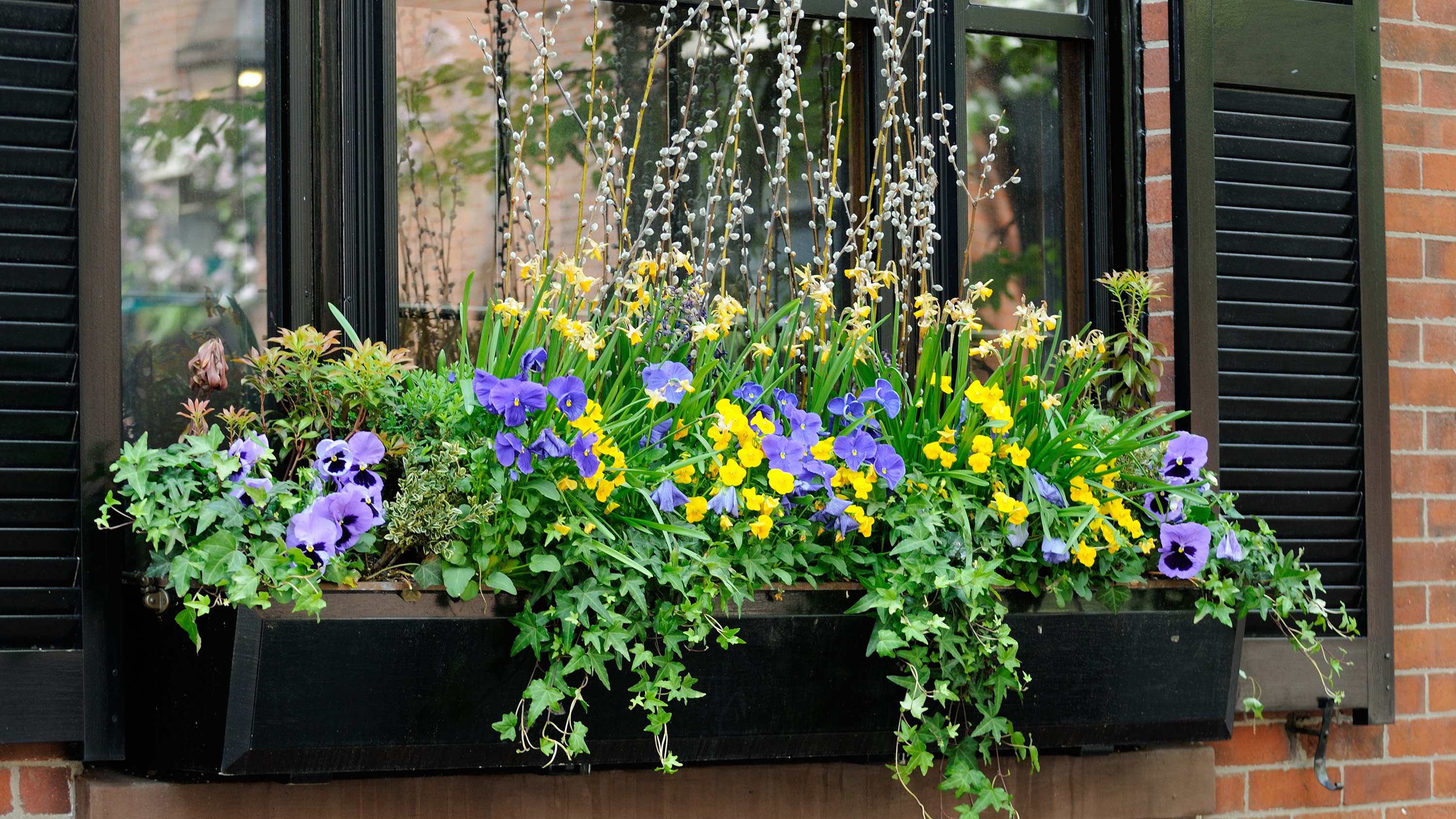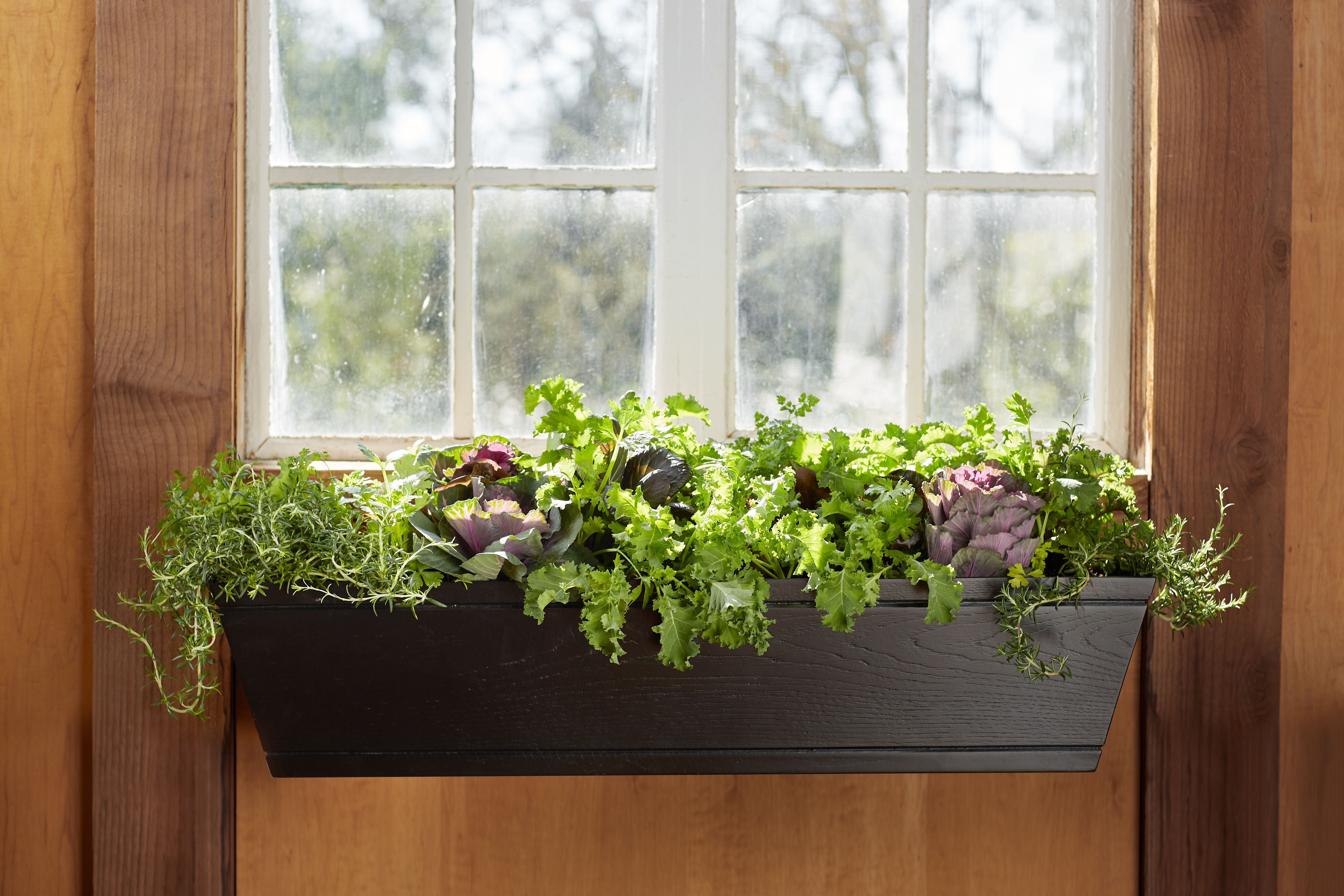Blooming Brilliance: A Comprehensive Guide to Window Box Gardening

Window boxes, those miniature gardens perched precariously beneath our windowsills, offer a burst of vibrant color and life to even the most urban of environments. More than just decorative accents, they are miniature ecosystems, offering a refuge for pollinators, a splash of greenery, and a constant reminder of the natural world. Whether you live in a bustling city apartment or a sprawling suburban home, window boxes can transform your space and elevate your surroundings.
This comprehensive guide will delve into the art and science of window box gardening, covering everything from selecting the right box and soil to choosing the perfect plants and providing ongoing care. Get ready to unlock the potential of your windowsills and create a miniature paradise that will flourish throughout the seasons.
1. Choosing the Right Window Box:
The foundation of any successful window box garden is, of course, the box itself. The right choice will ensure proper drainage, adequate space for root growth, and a design that complements your home’s aesthetic. Here’s a breakdown of factors to consider:
-
Material:
- Plastic: Lightweight, affordable, and durable, plastic window boxes are a popular choice. They resist rot and are easy to clean. However, they can be less aesthetically pleasing than other options and may fade or crack in extreme temperatures.
- Wood: Offering a classic and natural look, wooden window boxes provide excellent insulation for roots. Choose rot-resistant woods like cedar or redwood, and consider lining the inside with plastic to prolong their lifespan. Regular maintenance, including painting or staining, is required.
- Metal: Durable and stylish, metal window boxes can add a modern touch to your home. Look for rust-resistant options like aluminum or galvanized steel. Metal can heat up quickly in direct sunlight, potentially harming plant roots, so consider lining the box or choosing a lighter color.
- Composite: Made from recycled materials, composite window boxes offer the durability of plastic with the aesthetic appeal of wood. They are resistant to rot, insects, and fading, making them a low-maintenance option.

:max_bytes(150000):strip_icc()/2648401_StSim_1931-2000-23feec517af640df92636ac904da9f47.jpg)
Size: The size of your window box will depend on the size of your window and the types of plants you want to grow. A general rule of thumb is to choose a box that is at least 8 inches wide and 8 inches deep to provide adequate space for root growth. The length should be slightly shorter than the width of your window to avoid obstructing views.
-
Drainage: Proper drainage is crucial for preventing root rot. Ensure your window box has drainage holes at the bottom. If not, drill some yourself. Consider adding a layer of gravel or pebbles at the bottom of the box to improve drainage.
-
Mounting: Safety is paramount when mounting a window box. Choose sturdy brackets that are designed to support the weight of the box, soil, and plants. Secure the brackets to the window frame or wall using appropriate screws or bolts. Consult a professional if you are unsure about the best mounting method for your home.

2. Selecting the Right Soil:
The soil in your window box is the lifeblood of your plants. Choose a high-quality potting mix that is specifically formulated for containers. Avoid using garden soil, as it can compact easily and impede drainage.
- Potting Mix Composition: Look for a potting mix that contains a blend of peat moss, perlite, and vermiculite. Peat moss helps retain moisture, perlite improves drainage, and vermiculite provides aeration.
- Slow-Release Fertilizer: Consider adding slow-release fertilizer granules to the potting mix at planting time. This will provide a steady supply of nutrients to your plants over several months.
- Water Retention: If you live in a hot or dry climate, consider adding a water-retentive polymer to the potting mix. These polymers absorb water and release it slowly, helping to keep the soil moist.
3. Choosing the Right Plants:
Selecting the right plants for your window box is essential for creating a visually appealing and thriving display. Consider the following factors:
- Sunlight: Observe how much sunlight your window box receives throughout the day. Choose plants that are suited to the amount of sunlight available. Full sun plants need at least 6 hours of direct sunlight per day, while partial shade plants need 3-6 hours of sunlight. Shade-tolerant plants can thrive in less than 3 hours of sunlight.
- Hardiness Zone: Select plants that are hardy in your local climate. This will ensure that they can withstand the temperatures and growing conditions in your area.
- Size and Growth Habit: Consider the mature size and growth habit of the plants you choose. Choose plants that will complement each other and fill the window box without overcrowding it.
- Color and Texture: Choose plants with a variety of colors and textures to create a visually interesting display. Consider using a combination of upright plants, trailing plants, and mounding plants to add depth and dimension.
- Bloom Time: Select plants with staggered bloom times to ensure that your window box is in bloom throughout the growing season.
Planting Design Principles for Window Boxes:
-
Thriller, Filler, and Spiller: This classic design principle is a great starting point for creating a balanced and visually appealing window box.
- Thriller: Choose a tall, upright plant to serve as the focal point of the window box. Examples include geraniums, salvia, or ornamental grasses.
- Filler: Select mounding plants to fill in the space around the thriller. Examples include petunias, impatiens, or begonias.
- Spiller: Choose trailing plants to cascade over the edge of the window box. Examples include ivy, trailing verbena, or sweet potato vine.
-
Color Harmony: Consider using a color palette to create a cohesive and harmonious look. You can choose a monochromatic color scheme, using different shades of the same color, or a complementary color scheme, using colors that are opposite each other on the color wheel.
-
Texture and Form: Combine plants with different textures and forms to add visual interest. For example, you could combine a plant with large, bold leaves with a plant with small, delicate leaves.
Examples of Popular Window Box Plants:
- Full Sun: Geraniums, Petunias, Salvia, Lantana, Verbena, Marigolds, Zinnias, Osteospermum.
- Partial Shade: Impatiens, Begonias, Fuchsias, Coleus, Lobelia, Pansies, Violas.
- Shade: Browallia, Torenia, Sweet Alyssum, Ferns, Ivy, Vinca.
- Herbs: Thyme, Rosemary, Lavender, Mint, Parsley, Oregano.
- Vegetables: Lettuce, Spinach, Chard, Radishes, Strawberries.
4. Planting Your Window Box:
Once you have chosen your window box, soil, and plants, it’s time to get planting.
- Line the Box (Optional): If you are using a wooden or metal window box, consider lining it with plastic to protect the material from moisture.
- Add Drainage Layer: Place a layer of gravel or pebbles at the bottom of the box to improve drainage.
- Fill with Potting Mix: Fill the window box with potting mix, leaving about an inch of space at the top.
- Arrange Plants: Arrange the plants in the window box according to your design plan.
- Plant the Plants: Gently remove the plants from their containers and loosen the roots. Plant them in the potting mix, spacing them according to their mature size.
- Water Thoroughly: Water the window box thoroughly after planting, until water drains out of the drainage holes.
- Add Mulch (Optional): Add a layer of mulch to the top of the soil to help retain moisture and suppress weeds.
5. Caring for Your Window Box:
Proper care is essential for keeping your window box plants healthy and thriving.
- Watering: Water your window box regularly, especially during hot or dry weather. Check the soil moisture by sticking your finger into the soil. If the soil feels dry to the touch, it’s time to water. Water deeply, until water drains out of the drainage holes. Avoid overwatering, as this can lead to root rot.
- Fertilizing: Fertilize your window box plants regularly with a balanced liquid fertilizer. Follow the instructions on the fertilizer label.
- Deadheading: Remove spent flowers regularly to encourage more blooms.
- Pruning: Prune your plants as needed to maintain their shape and size.
- Pest and Disease Control: Inspect your plants regularly for signs of pests or diseases. Treat any problems promptly with appropriate pesticides or fungicides.
- Winterizing: In cold climates, you may need to protect your window box plants from freezing temperatures. Consider moving the window box indoors or covering it with a blanket or burlap.
6. Seasonal Considerations:
Your window box display can be adapted to reflect the changing seasons.
- Spring: Plant colorful spring flowers like pansies, violas, and daffodils.
- Summer: Plant heat-loving annuals like geraniums, petunias, and zinnias.
- Fall: Plant cool-season flowers like chrysanthemums, asters, and ornamental kale.
- Winter: Plant evergreens, berries, and other winter interest plants.
FAQ:
- How often should I water my window box? Watering frequency depends on the weather, the type of plants, and the type of soil. Check the soil moisture regularly and water when the top inch feels dry.
- What kind of fertilizer should I use? Use a balanced liquid fertilizer or slow-release fertilizer granules.
- How do I prevent my window box from drying out? Use a potting mix that contains water-retentive polymers, add a layer of mulch, and water regularly.
- How do I protect my window box from pests? Inspect your plants regularly for signs of pests and treat any problems promptly with appropriate pesticides.
- Can I grow vegetables in a window box? Yes, you can grow vegetables in a window box. Choose compact varieties of vegetables that are well-suited to container gardening.
- How do I choose the right plants for my window box? Consider the amount of sunlight your window box receives, your climate, and your personal preferences.
Conclusion:
Window box gardening is a rewarding and accessible way to bring beauty and nature into your life. By following the tips and techniques outlined in this guide, you can create a thriving and visually stunning window box that will enhance your home and bring joy to your surroundings. So, embrace the challenge, experiment with different plants and designs, and watch your windowsill transform into a miniature garden oasis. Happy gardening!
